Newest FAQs
Stainless flat washers fall under the same ASME dimensional standards as your typical plain steel flat washer, which is ASME B18.21.1. Under ASME B18.21.1, dimensional tolerances for plain washers, there are two types specified, type A and type B. Type A has two series sizes to consider which include narrow and wide, while Type B... Read more
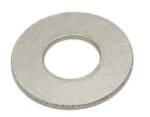
ASME B18.31.5 is, “The standard that establishes general requirements for parts classified as bent bolts.“ According to this specification, “The inside diameters or bend radii shall be as agreed between the buyer and manufacturer, as each dimension depends on material characteristics.” In essence, there is no standard guideline for the radius of the bend in... Read more
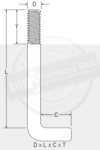
Yes! Typically, we prefer that overseas customers arrange their own freight, but we have the resources to handle the shipping process for you. We can ship to an airport where your company or a freight forwarder will transport the bolts to their destination, or we can arrange a door-to-door shipment. What goes into arranging your... Read more
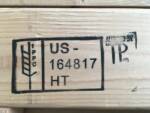
No, only Type 316 stainless steel clevis forging are available off the shelf. Suppliers choose not to double inventory them since 316 stainless is virtually identical in strength to 304 stainless and provides more corrosion resistance. Type 304 stainless threaded rods are frequently supplied with Type 316 stainless clevises. If a 304 stainless clevis is... Read more
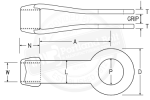
ASTM A320 possesses several fastener grades manufactured from either alloy or stainless steel and are intended for cold temperature applications. Both Grade L7 and L7M are manufactured from a quenched and tempered alloy steel. While the chemical requirements for both Grades L7 and L7M are identical, there are several differences that separate the two grades.... Read more
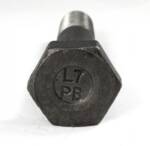
There are a variety of ways Portland Bolt get can get your order to you. Because a very small portion of our orders are shipped within driving distance of our manufacturing facility, we don’t have our own delivery truck. We have several freight carriers that come in on a daily basis, and we have access... Read more

Unlike hex bolts, lag screws, and structural bolts, there is no standard thread length for tie rods. A detailer or engineer may specify the thread length for tie rods, but it is not uncommon for the thread length to be left unspecified. When thread lengths are not specified, Portland Bolt will determine the thread length... Read more
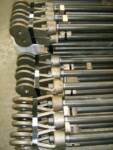
There are no standard thread length calculations for anchor rods. Anchor bolt thread length will depend on the required projection for the protruding end and the required hardware or configuration for the embedded end. It is very common for structural drawings to detail the required thread lengths for anchor bolts. Bottom Threads Bottom threads will... Read more
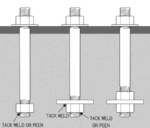
The organization that is responsible for addressing dimensional guidelines and tolerances for fasteners is the American Society of Mechanical Engineers (ASME). This organization was founded in 1880 and now has over 130,000 members in 151 countries. In addition to being a standards organization, ASME is also involved in research and development, training and professional development,... Read more

DFARS stands for Defense Federal Acquisition Regulation Supplement. This is a set of rules and restrictions that makes domestic or NATO materials preferred for United States defense contractors on military projects. A clause was added in 1973, amending the original regulation, currently allowing for materials to be melted in the following qualified countries per DFARS... Read more
